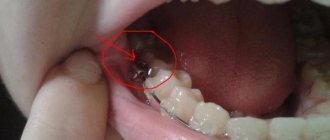What is local anesthesia
The main distinguishing feature of local anesthesia is that the person remains conscious during its effect. This type of anesthesia acts on receptors that are located below chest level. In addition to complete anesthesia, local anesthesia eliminates other tactile sensations, including temperature, pressure on tissue, or stretching.
Local anesthesia is possible in the following areas:
- on the surface of the mucous membranes of various organs - trachea, larynx, bladder, bronchi, and so on;
- in the thickness of tissue - bone, muscle or soft;
- in the direction of the nerve root extending beyond the boundaries of the spinal cord membrane.
- in impulse-conducting nerve cells of the spinal cord.
The main goal of local anesthesia is to block the occurrence of impulses and their transmission while maintaining consciousness.
Injection anesthesia in dentistry
Dental treatment
without pain relief, the process is so unpleasant that many can imagine it as their personal nightmare. However, now this is no longer the case: modern dentistry offers a wide selection of painkillers and anesthetic drugs, which allow you to feel nothing at all during the treatment and extraction of teeth, and to carry out the most complex dental operations, including dental implantation, without any discomfort for the patient. The power of modern drugs is 5-6 times higher, and the harm to health is many times lower, compared to those drugs that were used 15-20 years ago.
Nowadays, anesthesia is carried out for almost any type of dental treatment, with the exception of professional teeth cleaning.
(air flow, ultrasonic cleaning, enamel polishing). Due to the large number of nerve endings in the oral cavity, anesthesia is used during treatment, during tooth extraction, and during prosthetics/implantation and other complex manipulations.
The dentist chooses the drug, its dosage and type of anesthesia individually, depending on the patient’s age, characteristics of his body, allergic reactions, etc.
The most popular and effective type of pain relief is local anesthesia
– allows you to anesthetize a specific area of the oral cavity without plunging the patient into an unconscious state and without in any way affecting his perception of what is happening. The patient remains conscious, responds to the doctor’s comments and requests, and can control the process of his treatment.
Injection anesthesia
- This is an injection that blocks the nerve and the area of soft tissue around it. Complete numbness occurs, which lasts about one and a half to two hours - time that is just enough for most dental procedures. After the anesthesia wears off, there are no side effects or unpleasant consequences, and this is one of the main advantages of using local anesthesia. At As-Stom dental clinics, local dental anesthesia is actively used.
One of the most effective injectable drugs is Ultracaine - this drug can be used for asthma, allergic reactions and even endocrine diseases.
Contraindications to injection anesthesia:
- Reduced blood clotting, use of certain medications (anticoagulants) that impede blood clotting, as well as antidepressants and adrenergic blockers;
- Diseases of the endocrine system, diabetes mellitus;
- Cardiovascular diseases, pathologies (tachycardia, etc.);
- Liver and kidney failure.
In addition, it is not recommended to administer anesthesia on an empty stomach. It is best to eat 1.5-2 hours before visiting the dentist.
To eliminate the fear of an injection, anesthesia using the application method
.
To do this, soak a cotton swab with an anesthetic solution and place it on the part of the gum that needs to be “frozen.” This anesthesia does not last long, about 25-30 minutes, but this is enough to administer an anesthetic injection without fear and pain. Most often, this method is used in pediatric dentistry
so that the child is not afraid of the injection and does not feel anything.
Types of local anesthesia
In medicine, there are the following types of anesthesia, differing in some characteristics and scope of application:
- terminal;
- infiltration;
- regional;
- intravascular.
Each type has a list of indications and contraindications that must be taken into account when conducting them.
Terminal anesthesia
This type is also known as topical or surface anesthesia. The main areas of application are dentistry, gastroenterology and proctology. Terminal local anesthesia (anesthesia) differs from other types in the method of administration: anesthetics in the form of a spray, gel or ointment are applied to the surface of the skin or mucous membranes.
In proctology, local anesthetic gels and sprays (Katetdzhel, Lidochlor, Lidocaine, etc.) are used during proctological examinations and diagnostic procedures: rectal examination, anoscopy, sigmoidoscopy. The examination becomes virtually painless. Also, local anesthesia in proctologists is used during certain medical procedures: latex ligation of hemorrhoids, sclerotherapy of hemorrhoids, infrared coagulation of internal hemorrhoids, as well as biopsy from the rectum.
Infiltration anesthesia
It is used in dentistry and surgery, and involves the introduction of special solutions into soft tissues. The result of the procedure, in addition to a pronounced anesthetic effect, is an increase in pressure in the tissues, and, as a result, a narrowing of the blood vessels in them.
Regional anesthesia
This type involves the introduction of an anesthetic near large nerve fibers and their plexuses, resulting in pain relief in localized areas. It is divided into the following types of local anesthesia:
- conduction, with the introduction of drugs near the trunk of a peripheral nerve or nerve plexus;
- spinal, with the introduction of drugs into the space between the membranes of the spinal cord and “turns off” pain receptors over a large area of the body;
- epidural anesthesia, with the introduction of drugs into the space between the spinal cord and the walls of the spinal canal through a special catheter.
Intravascular anesthesia
It is used mainly for surgical interventions on the extremities. Administration of drugs is possible only with the application of a hemostatic tourniquet. The anesthetic is injected into a blood vessel located near the nerve responsible for the sensitivity of the limb in the area below the injection site.
In recent years, due to the emergence of more effective local anesthetics, the number of proctological operations performed using local anesthetics has increased significantly. In addition, our specialists have developed a method of combined anesthesia - a combination of local anesthesia and intravenous anesthesia. This significantly reduces the toxicity of general anesthesia and reduces the severity of pain in the postoperative period, which allows the patient to recover faster after surgery.
Most often, when performing proctological operations (hemorrhoidectomy, excision of anal fissures, small pararectal fistulas, rectal polyps), pararectal blockade, as well as spinal anesthesia, are used.
How anesthesia and anesthesia work: myths, fears, side effects
An alternative to spinal anesthesia can be epidural, when a local anesthetic is injected into the epidural space located in the spine through a special catheter. Depending on the type of operation (chest, abdominal cavity), the anesthesiologist determines the place of its introduction. In this case, the doctor can inject not only a local anesthetic into the epidural space, but also opioid painkillers that enhance the effect. Sometimes the epidural catheter may be left in place temporarily to provide pain relief as required by the patient (called an extended epidural).
More complex and serious interventions are always associated with lengthy preparation on the part of the anesthesiologist - installation of a central venous catheter, administration of infusion therapy, correction of blood coagulation parameters and other important parameters. It is also important to consider whether the operation is an emergency or a planned one.
Can you tell me more about the difference between spinal and epidural pain relief?
During spinal anesthesia, the drug is injected at the lumbar level into the subarachnoid space (into the cavity between the pia mater and the arachnoid mater of the spinal cord, filled with cerebrospinal fluid). Usually everything is limited to a couple of injections. In this way, the soft tissues above the injection site are anesthetized and the drug is directly administered under the dura mater. This anesthesia lasts from two to six hours and is technically easier to administer.
During epidural anesthesia, the drug is injected into the space between the dura mater of the spinal cord and the periosteum of the vertebrae, which contains connective tissue and venous plexuses. It is located closer to the skin compared to the spinal one. Anesthesia is given at any level of the spinal column. It is considered a technically more complex manipulation.
I've read that epidurals can cause paralysis.
This is a common fear, but anesthesiologists say that today it is practically impossible. Such a complication could arise after surgery due to improper care of the catheter, as a result of which the patient developed purulent epiduritis, which caused neurological symptoms with loss of function of the lower extremities. Or due to incorrect actions of the anesthesiologist, when puncture of the epidural space occurs at high levels (there is a risk of unintentional damage to the spinal cord). But in most cases, epidural anesthesia does not threaten anything other than a headache for several days after surgery.
Can everyone have anesthesia?
In life-threatening situations when a person needs surgery, doctors almost always use anesthesia. For example, if there is a victim of an accident on the couch who urgently needs surgery, the risk of having it performed with anesthesia for any health condition will be less than the risk of refusing it.
If a patient comes for a planned operation, then the anesthesiologist is obliged, after collecting an anamnesis, to select the appropriate type of anesthesia taking into account the patient’s health. Doctors are guided by the rule: the volume and risk of anesthesia should not exceed the risks on the part of the surgeon. The patient's age cannot be a contraindication. Specialists take into account all severe chronic diseases that complicate the state of health, and allergic reactions to anesthesia components.
Is there a difference between old and new drugs?
Yes there is: in their consumption, efficiency and safety of use. However, it is invisible to patients; To appreciate the difference, you have to be an anesthesiologist.
How to prepare for anesthesia and how to survive recovery from it?
Preparation depends directly on the type of anesthesia and surgical intervention. The doctor will tell you what and how best to do before the operation. Just build a trusting relationship with your treating doctors, it will be much calmer.
Each patient experiences recovery from anesthesia individually; not everyone feels bad, but many feel nausea and drowsiness, and muscle tremors. It all depends on the characteristics of the body and the drugs that were administered during the operation. After waking up, it is important to listen to your body and report any deviations to your doctors.
Preparations for local anesthesia
The following drugs are used to provide local anesthesia:
- Novocaine;
- Dicaine;
- Lidocaine;
- Trimecaine;
- Bupivacaine;
- Naropin;
- Ultracaine.
Each of them is effective when carrying out a certain type of anesthesia. Thus, Novocaine Dicaine and Lidocaine are more often used when it is necessary to anesthetize the skin and mucous membranes, while more powerful drugs, such as Naropin and Bupivacaine, are used for spinal and epidural anesthesia.
Indications for local anesthesia
All methods of local anesthesia have the same list of indications, and are used if necessary to numb a specific area for a short time (up to an hour and a half). It is recommended to use them:
- for performing surgical non-abdominal interventions or small abdominal operations, the duration of which does not exceed 60-90 minutes;
- with intolerance to general anesthesia;
- if the patient is in a weakened state;
- if it is necessary to carry out diagnostic procedures against the background of severe pain;
- if the patient refuses general anesthesia;
- in elderly patients;
- when general anesthesia cannot be used.
What foods can you eat?
You need to switch to a special diet at least 3 days before the examination. It is better if this period is 5-6 days. The following products are allowed to be consumed:
- Low-fat cheeses, kefir.
- Eggs.
- Buckwheat porridge.
- Boiled lean meat.
- Boiled fish of low-fat varieties.
- Honey, sugar, jelly.
- Mashed potatoes (small quantities).
If you are having a colonoscopy, you need to pay maximum attention to preparing for the procedure at home. Diet violations should not be allowed; this can lead to the accumulation of gases and feces in the intestines, which will greatly complicate the examination.
Possible complications when using local anesthesia
The use of local anesthetics carries certain risks, which include several types of complications:
- damage to the central nervous system and conduction system of the heart;
- damage to spinal tissue, nerve roots and spinal cord membranes;
- suppuration at the site of anesthetic injection;
- allergic reactions.
In most cases, the listed problems arise when the anesthesia technique is violated, or when the anamnesis is not collected completely.











